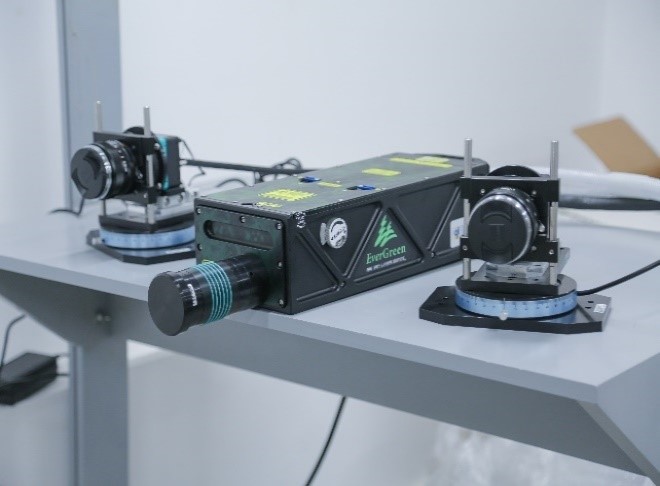Project Base Learning Lab
1.Cooling tower

This equipment has been designed to experience with the construction principles and operational characteristics of cooling towers and it mainly consists of a packed tower of transparent metacrylate
2.Energy conversion in wind power plant

Study how kinetic wind energy is converted into electrical energy . the experimental plant consists of a wind tunnel and control unit . the wind tunnel contains a wind power plant in laboratory-scale and an axial fan. A rotor and a generator are the core elements of a wind power plant. The control unit includes the control elements for the axial fan, the storage required to set the rotor of the wind power plant in rotational motion. A flow straightener ensures the flow is consistent and low in turbulence. A generator converts the rotor’s kinetic energy into electrical energy. The electrical energy is fed into a stand- alone system that is not connected to the mains grid. A charge controller in an accumulator provides intermediate storage of the electrical energy. The electrical energy can be used by means of an electrical load. There are two bulbs that can be used as consumers. Optionally, it is also possible to connect an external consumer (such as a heater). There is no provision to feed into a public power grid
3.Particle Image Velocimeter (PIV) and micro PIV system

To visualize and measure tow-dimensional component gas / liquid flow by use of laser and camera
4.Thermal camera

Used to measure the temperature of any body
5.EDUCATIONAL KIT -HEAT

•Difference between heat and temperature
• Calibrating a thermometer
• Thermal equilibrium
• Heat capacity
• Water equivalent of a calorimeter
• Determining the specific heat of a solid
• Determining the specific heat of a liquid
• Heating curves of liquids
• Linear expansion of solids. Measuring the coefficient of linear
expansion
• Cubic expansion of solids
• Expansion of liquids. Measuring the coefficient of apparent
expansion
• Anomalous expansion of water
• Observing the expansion of gases
• Gas laws. Boyle’s/Mariotte’s law, Charles’s law, Gay-Lussac’s law
6.Potentiostat / Gelvanostat

● Reaction mechanism of Electrosynthesis, electrodeposition, anodic oxidation, etc. ● Electrochemical analysis and sensor; ● New energy materials (Li-ion battery, solar cell, fuel cell, supercapacitors), advanced functional materials, photoelectronic materials; ● Corrosion study of metals in water, concrete and soil, etc; ● Fast evaluation of corrosion inhibitor, water stabilizer, coating and cathodic protection efficiency
7.Weather Station

A weather station is a facility, either on land or sea, with instruments and equipment for measuring atmospheric conditions to provide information for weather forecasts and to study the weather and climate. The measurements taken include temperature, atmospheric pressure, humidity, wind speed, wind direction, and precipitation amounts. Wind measurements are taken with as few other obstructions as possible, while temperature and humidity measurements are kept free from direct solar radiation, or insolation. Manual observations are taken at least once daily, while automated measurements are taken at least once an hour. Weather conditions out at sea are taken by ships and buoys, which measure slightly different meteorological quantities such as sea surface temperature (SST), wave height, and wave period. Drifting weather buoys outnumber their moored versions by a significant amount.
8.Principles of solar thermal energy

Physical principles by which solar energy heats water using solar collectors
• Sizing of collector surface, storage tank, primary circuit
• Filling and maintenance operations
• Plant parameters optimization
9.Solar Simulator

- Photovoltaic Testing
- Environmental Testing
- Photobiology
- Photochemistry
- Material and degradation testing

